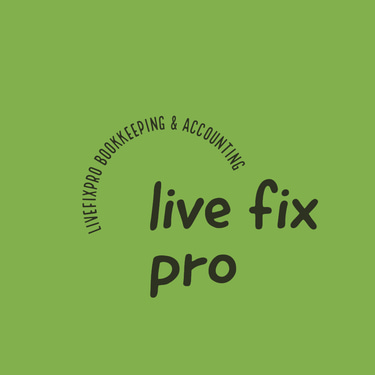Here's a more detailed description of each accounting concept, along with its application in QuickBooks: "Unleash Your Financial Wizardry: A Deep Dive into QuickBooks Magic!"
Here's a more detailed description of each accounting concept, along with its application in QuickBooks: 🚀 Ready to take your financial prowess to new heights? 🧙 Dive deep into the enchanting world of QuickBooks with our latest post, "Unleash Your Financial Wizardry: A Deep Dive into QuickBooks Magic!" ✨📚 Discover the secrets behind mastering QuickBooks, from decoding assets and liabilities to conjuring impeccable balance sheets. 📊💼 Join us on this magical journey as we demystify accounting complexities and empower you to navigate the financial realm with confidence. 🔍 Explore hidden QuickBooks features, unravel the mysteries of accruals and depreciation, and learn how to cast the perfect journal entry spell. 📓✨ Whether you're a budding entrepreneur or a seasoned business sorcerer, this post is your key to unlocking financial success. 🌟 Don't miss out on the opportunity to become a financial wizard! 💼💫 Read, share, and let the magic of QuickBooks propel your business to extraordinary heights. 🚀✨ #FinancialWizard #QuickBooksMagic #AccountingMastery #BusinessSuccess 📈🔮


Hello dearest Readers,
Here's a more detailed description of each accounting concepts, along with its application in QuickBooks:
Asset:
Description: Anything of value owned by a business.
QuickBooks Application: QuickBooks allows you to create and track assets, such as equipment or property, in the "Fixed Asset" section.
Liability:
Description: Debts or obligations of a business.
QuickBooks Application: You can record liabilities, like loans or unpaid bills, in the "Liability" section to keep track of what the business owes.
Equity:
Description: The residual interest in the assets of a business after deducting liabilities.
QuickBooks Application: QuickBooks automatically calculates and updates equity as transactions are recorded, reflecting the owner's stake in the business.
Revenue:
Description: Income earned from the sale of goods or services.
QuickBooks Application: Sales transactions are recorded in QuickBooks, contributing to the revenue total in the "Sales" or "Income" accounts.
Expense:
Description: Costs incurred in the process of generating revenue.
QuickBooks Application: You can record various expenses, such as rent, utilities, and wages, in specific expense accounts.
Income Statement:
Description: A financial statement showing a company's revenues and expenses over a specific period.
QuickBooks Application: QuickBooks generates income statements automatically, summarizing revenues and expenses.
Balance Sheet:
Description: A financial statement presenting a snapshot of a company's financial position at a specific point in time.
QuickBooks Application: The balance sheet in QuickBooks reflects assets, liabilities, and equity, providing a real-time financial overview.
Cash Flow Statement:
Description: A financial statement providing information about a company's cash inflows and outflows.
QuickBooks Application: While QuickBooks doesn't directly generate cash flow statements, you can use cash flow reports to analyze cash movements.
Accounts Receivable:
Description: Amounts owed to a company by its customers for goods or services on credit.
QuickBooks Application: QuickBooks tracks and manages accounts receivable, providing reports to monitor outstanding customer balances.
Accounts Payable:
Description: Amounts owed by a company to its suppliers or creditors for goods or services on credit.
QuickBooks Application: QuickBooks helps you manage and pay bills, keeping track of accounts payable.
Depreciation:
Description: The systematic allocation of the cost of an asset over its useful life.
QuickBooks Application: QuickBooks allows you to set up and calculate depreciation for fixed assets over time.
Amortization:
Description: The process of spreading the cost of intangible assets over their useful life.
QuickBooks Application: Similar to depreciation, QuickBooks supports amortization for intangible assets like patents or copyrights.
Accrual:
Description: Recording revenue or expenses when they are earned or incurred, regardless of when the cash is received or paid.
QuickBooks Application: QuickBooks supports both cash and accrual accounting methods, allowing you to choose how transactions are recorded.
Trial Balance:
Description: A list of all accounts and their balances to ensure that debits equal credits.
QuickBooks Application: You can generate a trial balance report in QuickBooks to verify the accuracy of your accounting records.
General Ledger:
Description: A complete record of a company's financial transactions, organized by account.
QuickBooks Application: QuickBooks maintains a digital general ledger that records all financial transactions entered into the system.
Journal Entry:
Description: The recording of financial transactions in the accounting system.
QuickBooks Application: Users can manually enter journal entries in QuickBooks to record transactions that don't fit into regular forms.
GAAP (Generally Accepted Accounting Principles):
Description: A set of accounting standards and principles used in the preparation of financial statements.
QuickBooks Application: QuickBooks is designed to adhere to GAAP, ensuring that financial statements generated are in accordance with these principles.
Fiscal Year:
Description: A 12-month accounting period used by a business for financial reporting.
QuickBooks Application: You can set up your company's fiscal year in QuickBooks to align with your reporting preferences.
Audit:
Description: Systematically examining a company's financial statements and accounting records.
QuickBooks Application: QuickBooks doesn't perform audits, but it provides reports and data that can be used during an external audit.
Cost of Goods Sold (COGS):
Description: The direct costs associated with producing goods or services sold by a company.
QuickBooks Application: QuickBooks allows you to track COGS for inventory items, helping you calculate gross profit.
Double-Entry Accounting:
Description: A system of accounting in which every transaction affects at least two accounts.
QuickBooks Application: QuickBooks follows double-entry accounting principles, ensuring accurate and balanced financial records.
Financial Ratio:
Description: A comparison of two or more financial variables to analyze a company's financial health.
QuickBooks Application: QuickBooks provides various financial reports and key performance indicators that can be used to calculate and analyze financial ratios.
These concepts are foundational to accounting, and QuickBooks is a powerful tool that facilitates the application of these principles in managing a company's financial information.
For expert Assistance on Bookkeeping , accounting & QuickBooks Setup services reach out
Call Now # 914 -639-6759 or write to us at Support@livefixpro.com
